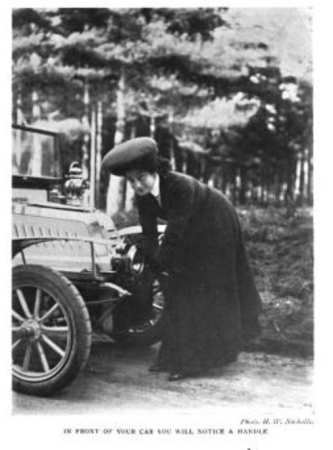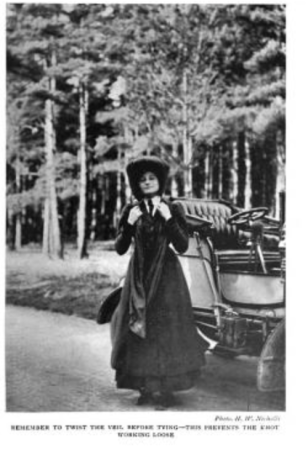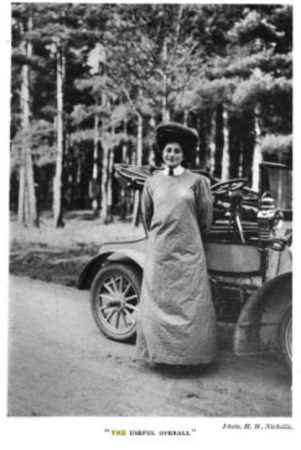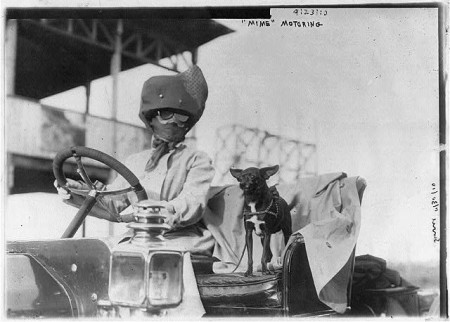 I just stumbled across a fascinating book called The Woman and The Car: A Chatty Little Handbook for all Women Who Motor or Who Want to Motor by Dorothy Levitt, written in 1909 (and available on Google Books here).
I just stumbled across a fascinating book called The Woman and The Car: A Chatty Little Handbook for all Women Who Motor or Who Want to Motor by Dorothy Levitt, written in 1909 (and available on Google Books here).
It’s worth a click through, but here are some highlights. In the chapter called “The All-Important Question of Dress,” the author shares the following tips:
I would advise shoes rather than boots as they give greater freedom to the ankles and do not tend to impede the circulation, as a fairly tightly laced or buttoned boot would do, but this is a matter of individual taste. In winter time it is advisable to wear high gaiters, have them specially made, almost up to the knee. (24)
 And what to wear on your head?
And what to wear on your head?
As to head-gear, there is no question: the round cap or close-fitting turban of fur are the most comfortable and suitable, though with the glass screen up it is possible to wear an ordinary hat, with a veil round it. (26)
And:
Indispensable to the motoriste who is going to drive her own car is the overall.
Here’s Dorothy wearing her overall. In her chapter called “Motor Manners,” she lays out some rules of the road. Drivers should avoid pedestrians, she acknowledges, but:
In her chapter called “Motor Manners,” she lays out some rules of the road. Drivers should avoid pedestrians, she acknowledges, but:
Dogs, chickens and other domestic animals at large on the highway are not pedestrians, and if one is driving at a regulation speed, or under, one is not responsible for their untimely end.
And then there’s this:
If you have a syren fitted to your car, do not sound it in a town or village. A syren is really only necessary for Continental driving.
I should have mentioned that Ms. Lytton is British. The British and the French haven’t seen eye-to-eye since the Battle of Hastings. I imagine her use of the “syren” probably didn’t go over very well on the Continent.
